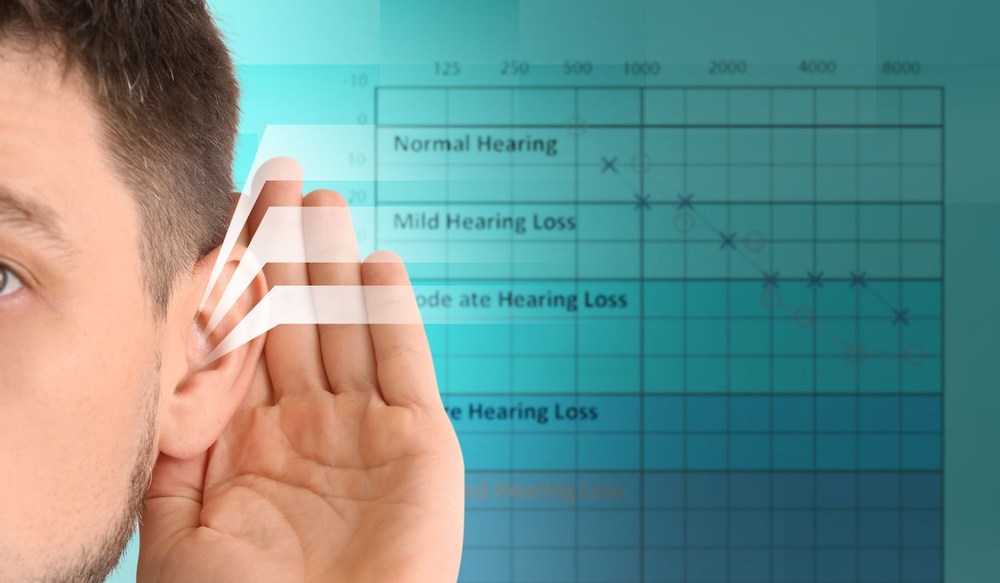The Role of Hearing Tests in Preventative Health Care
Hearing tests are an important part of preventative health care, yet many

By: admin | May 31, 2024
Understanding your options for hearing aids is an important part of dealing with hearing loss. Among the choices available, invisible or discreet hearing aids have become quite popular. These devices combine effectiveness with subtlety, providing a solution to hearing loss without drawing attention.
Hearing aids come in various shapes and sizes – some are quite noticeable, while others are designed to be nearly undetectable. If wearing a noticeable hearing aid is not your personal preference, invisible or discreet options come into play – they enhance your hearing experience without making your hearing loss obvious. However, it’s important to consider aesthetics, functionality and lifestyle compatibility when choosing these innovative devices.
The history of hearing aids is quite intriguing, showing how far these devices have evolved. What started as simple ear trumpets in the 17th century has transformed into today’s sophisticated digital devices.
Ear trumpets, the earliest form of hearing aids, were funnel-shaped instruments that collected sound waves and directed them into the ear. They were bulky and not very effective but marked a significant step towards assisting those with hearing loss. The 19th century brought technological advancements with the invention of carbon microphone hearing aids. These devices used carbon grains to amplify sound but were not portable or discreet.
The 20th century introduced electronic hearing aids that used vacuum tubes to amplify sound. However, they were still large and often required carrying a battery pack. The introduction of transistor technology in the mid-20th century revolutionized hearing aids by making them smaller and more efficient. This led to behind-the-ear models that offered better sound quality and comfort.
Today’s digital hearing aids are far removed from their predecessors. They’re small, discreet, and packed with features like noise reduction, directional microphones, wireless connectivity, rechargeable batteries, and even tinnitus masking.
The rising popularity of invisible-in-canal (IIC) and completely-in-canal hearing aids reflects a growing demand for discreet and cosmetically appealing hearing solutions. Unlike traditional hearing aids, which are typically worn behind the ear or inside the ear canal, invisible hearing aids are custom fitted to sit deep within the ear canal, making them virtually undetectable to others. This discreet design appeals to individuals who may feel self-conscious about wearing visible hearing aids or who prefer a more subtle hearing solution. Additionally, advancements in technology have improved the performance and comfort of invisible hearing aids, making them an attractive option for those seeking high-quality hearing assistance without compromising aesthetics. As a result, invisible hearing aids have become increasingly popular among individuals of all ages, driving innovation and accessibility in the field of hearing healthcare.
When it comes to discreet hearing aids, there’s a wealth of options to choose from. Each type has its unique features and benefits, catering to different needs and preferences. For example, completely-in-canal hearing aids are designed to fit entirely inside your ear canal. They’re compact and virtually invisible, making them a great choice if you prefer to keep your hearing aid hidden. On the other hand, in-the-canal hearing aids are slightly larger but still offer a high level of subtlety. They sit partly in the ear canal and have added features like volume controls.
Then there are invisible-in-canal (IIC) hearing aids which take discretion to a new level. These devices are custom-made to fit deep inside your ear canal, making them completely hidden from view. They offer excellent sound quality and can be easily removed for cleaning or adjustments. With such a diverse range of discreet hearing aids available, you can find one that fits perfectly with your lifestyle while keeping your hearing health in check.
To fully appreciate invisible hearing aids, it’s important to understand how these small but powerful devices work. Despite their compact size, they are packed with advanced technology designed to improve your hearing experience.
Invisible hearing aids function similarly to other types of hearing aids. They capture sound using a tiny microphone, process the sound to enhance certain frequencies and then deliver the amplified sound into your ear through a speaker. The key difference lies in their design and placement within the ear canal:
Invisible hearing aids not only provide a discreet solution for hearing loss, but they also deliver exceptional sound quality and comfort. Their custom-fit design ensures a comfortable fit while their deep placement in the ear canal leverages your ear’s natural acoustics to provide a more natural sound experience.
According to a study 48% of people who use completely-in-canal or invisible-in-canal hearing aids reported improvement in their overall ability to communicate effectively in most situations. This statistic highlights how these devices can significantly enhance one’s quality of life by improving communication abilities and boosting self-confidence.
Individuals with mild-to-moderate hearing loss who require personalized and comfortable hearing assistance may benefit greatly from invisible hearing aids. The discreet design allows wearers to seamlessly integrate hearing aids into their daily lives without drawing attention, enhancing their confidence and overall well-being. Moreover, invisible hearing aids are suitable for individuals of all ages, making them a versatile and accessible option for anyone seeking high-quality hearing assistance with minimal visibility.
It’s important to remember that while invisible hearing aids offer numerous advantages, they might not be suitable for everyone. Factors such as your degree of hearing loss, lifestyle needs and comfort with technology should all play a part in your decision-making process. Consulting with an audiologist is the best way to determine if invisible hearing aids are right for you.
How will you know if invisible hearing aids will be right for you? With invisible hearing aids you might prefer your hearing loss treatment to be as discreet as possible. On the other hand, larger devices such as behind-the-ear (BTE) or in-the-ear (ITE) models are more visible but may offer additional features like directional microphones or telecoil.
Invisible hearing aids are custom-fitted for your ear canal, which can provide a comfortable fit and natural sound quality. However, they may not be suitable for individuals with severe hearing loss due to their smaller size and limited power. Larger models like BTE can cater better to severe or profound hearing loss cases.
Lastly, maintenance and battery life are other factors worth considering when comparing invisible and other types of hearing aids. Due to their small size, invisible models often have shorter battery life and may require more frequent cleaning than larger models. So, while they offer an aesthetically pleasing solution for managing your hearing health, it’s crucial that you weigh these pros and cons before making your decision.
When it comes to choosing an invisible hearing aid, there are several important factors to consider. First and foremost, you need to think about your level of hearing loss. Invisible hearing aids are generally most effective for mild-to-moderate hearing loss. If your hearing loss is severe, a different type of aid may be more suitable. Secondly, consider your lifestyle and personal preferences. If discretion is important to you, then an invisible hearing aid could be the perfect choice. However, these devices can sometimes lack some of the additional features found in larger models, such as directional microphones or telecoil functionality.
Finally, keep in mind that all ears are unique! What works well for one person may not work as well for another. Therefore, it’s always a good idea to consult with an audiologist who can guide you through the process and help you make the best decision for your individual needs and circumstances.
Taking care of your invisible hearing aid is essential to ensure its longevity and optimal performance. Regular cleaning is a must, as wax or debris build-up can affect sound quality. Using a soft, dry cloth to gently wipe the device and a cleaning tool for the microphone opening can help keep it in top condition.
Battery life is another important aspect to consider. Invisible hearing aids typically have smaller batteries due to their compact size, which may require more frequent changes. Keeping spare batteries on hand and turning off your device when not in use can help prolong battery life.
While invisible hearing aids require some maintenance, these simple tips and tricks can make the process easy and hassle-free. Remember that taking good care of your device means it will take good care of you in return – providing you with clear sound and discreet assistance every day.
After discussing all aspects of invisible hearing aids, it’s clear that these devices offer a unique blend of discretion and advanced technology. However, choosing the right hearing aid is a personal decision that should be made after thorough consideration and professional advice.
With the help of an audiologist, you will be able to understand the different hearing aids, and if invisible hearing aids are right for you. It’s clear that these devices offer a unique blend of discretion and advanced technology. At Clarity By Kalie in Auburn, ME, our team of dedicated audiologists are here to help. We understand your need for discretion and are committed to helping you find a solution that fits seamlessly into your lifestyle while addressing your hearing needs effectively.
We encourage you to reach out to us at (207) 987-2700 for more information or to schedule a consultation with one of our experts. Remember, every person’s needs are unique – let us help you make an informed decision that suits your specific situation best. The next step in managing your hearing health effectively is just a consultation away!
Tags: benefits of hearing aids, hearing aid repair, hearing aid styles

Hearing tests are an important part of preventative health care, yet many
By: admin | November 18, 2025

Most children have never had a comprehensive hearing test before, and the
By: admin | September 24, 2025

Children learn to speak, understand language and build social connections
By: admin | May 23, 2025
